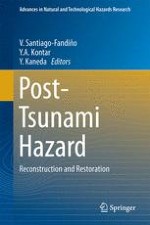2015 | OriginalPaper | Chapter
10. A Method to Determine the Level 1 and Level 2 Tsunami Inundation Areas for Reconstruction in Eastern Japan and Possible Application in Pre-disaster Areas
Authors : Abdul Muhari, Kentaro Imai, Daisuke Sugawara, Fumihiko Imamura
Published in: Post-Tsunami Hazard
Publisher: Springer International Publishing
Activate our intelligent search to find suitable subject content or patents.
Select sections of text to find matching patents with Artificial Intelligence. powered by
Select sections of text to find additional relevant content using AI-assisted search. powered by
